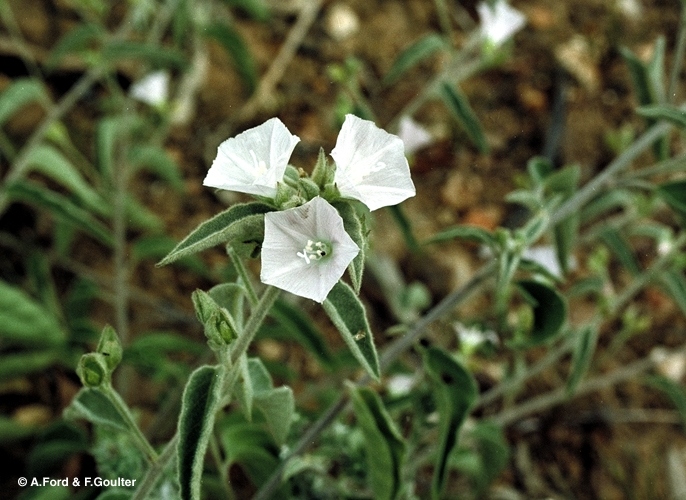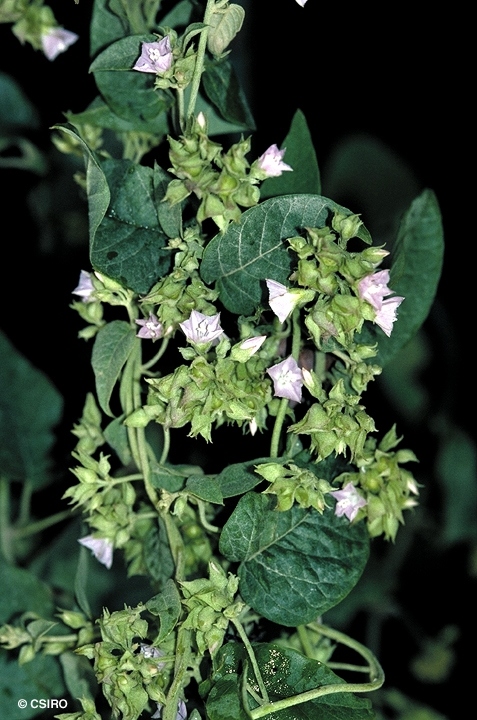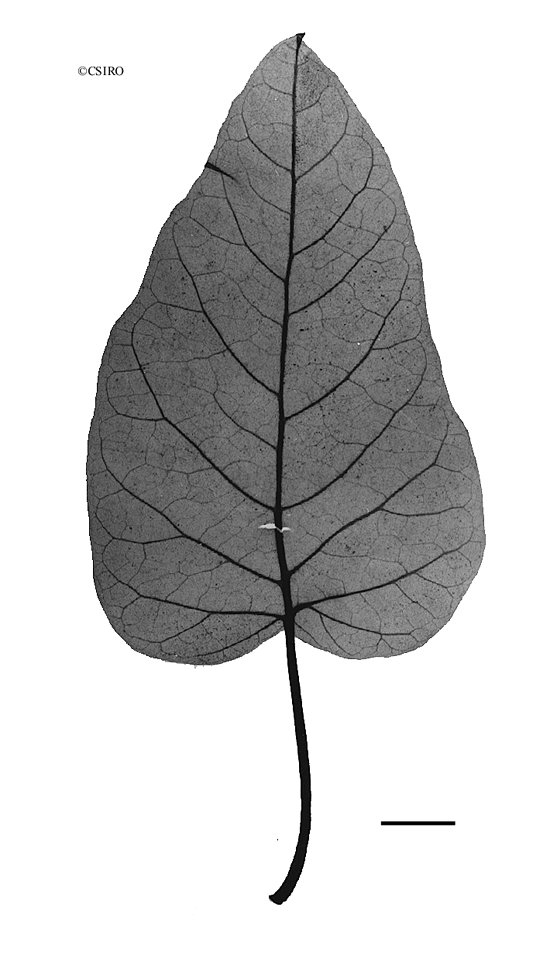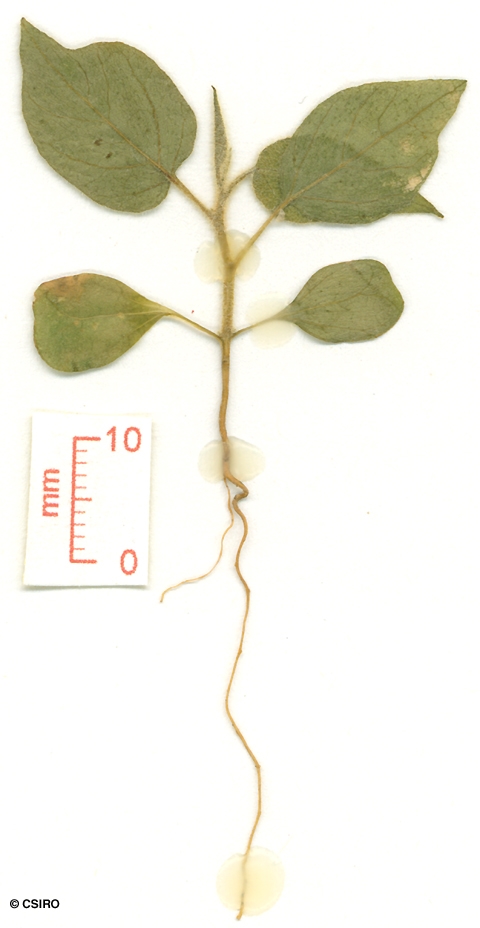Australian Tropical Rainforest Plants - Online edition
Jacquemontia paniculata (Burm.f.) Hallier f.







Hallier, J.G. (1893) Botanische Jahrbucher 18: 95.
A slender vine not exceeding a stem diameter of 2 cm.
Leaf blades about 4-5 x 3.5-4.5 cm, petioles about 1.2-1.4 cm long. Upper and lower surfaces sparsely clothed in hairs.
Inflorescence a shortly branched panicle on a long peduncle. Outer calyx lobes larger, about 10 x 5 cm. Corolla about 9-10 mm long, apices reddish, tube short or absent.
Fruits globular, about 5 x 4 mm, sepals persistent, +/- enveloping the fruit. Seeds up to 4 per fruit, each seed quadrant-shaped, about 2.5 mm long, testa glabrous to slightly tuberculate. Cotyledons folded once transversely. Radicle much narrower than the cotyledons. Endosperm not intruding between the cotyledons.
Cotyledons obovate, about 6-12 x 5-9 mm, apex emarginate, 3-5-veined at the base, midrib branched and not extending to the apex. First leaves ovate to cordate, apex acuminate, base truncate to obtuse to cordate. Upper and lower leaf blade surfaces clothed in 3-armed stellate hairs. At the tenth leaf stage: leaf blade narrowly ovate to cordate, about 5-6 x 3 cm, apex acuminate, base cordate to obtuse, petiole about 2-2.5 cm long. Leaves 3-5-veined at the base. Leaf blades almost glabrous to densely clothed in two or three-armed hairs. Stems twining. Seed germination time 7 to 18 days.
Occurs in WA, NT, CYP, NEQ, CEQ and southwards to almost to south-eastern Queensland. Altitudinal range in northern Australia from near sea level to 550 m. Often grows in open forest but also found in vine thicket or on the edges of monsoon forest or rain forest. Also occurs in East Africa, Madagascar, SE Asia, Malesia and the Pacific islands e.g. New Caledonia.





